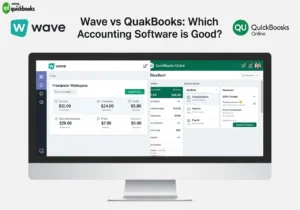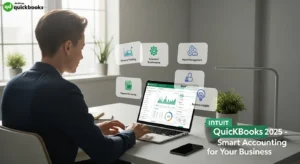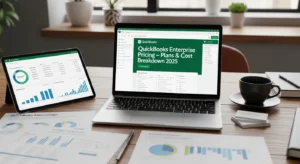QuickBooks Payments is a comprehensive payment processing solution designed specifically for businesses already using QuickBooks accounting software. This integrated approach eliminates the hassle of managing payments and financial records separately, creating a smooth workflow that many small business owners find invaluable.
Why Integrated Payment Processing Matters
Modern small business payments require more than just the ability to process transactions. Business owners need systems that:
- Automatically sync payment data with their accounting records
- Reduce manual data entry errors
- Provide real-time visibility into cash flow
Traditional standalone payment processors often create additional administrative burden, forcing entrepreneurs to manually reconcile transactions across multiple platforms.
The significance of integrated payment processing becomes clear when considering the time savings and accuracy improvements it delivers. When payments automatically flow into accounting software, business owners can focus on growth rather than bookkeeping tasks. This integration proves particularly valuable for service-based businesses, e-commerce operations, and any company that regularly invoices customers.

This comprehensive review examines QuickBooks Payments from multiple angles:
- Feature analysis covering invoice creation, recurring payments, and deposit timing
- Detailed fee breakdown comparing costs across different transaction types
- Step-by-step setup guide to help businesses implement the system effectively
Whether you’re currently using QuickBooks or considering a switch, understanding how this payment solution fits into your business operations will help you make an informed decision about your payment processing needs.
What is QuickBooks Payments?
QuickBooks Payments is a comprehensive payment processing service that seamlessly connects with QuickBooks accounting software. It creates a unified financial management system, eliminating the gap between payment acceptance and bookkeeping by automatically synchronizing transaction data across both systems.
The service functions as a native extension of QuickBooks, allowing businesses to accept, process, and track payments without switching between multiple platforms. When customers make payments through QuickBooks Payments, the transaction data flows directly into the accounting records, reducing manual data entry and minimizing the risk of errors that commonly occur with standalone payment processors.
Who is it for?
QuickBooks Payments specifically caters to small to medium-sized businesses seeking streamlined financial operations. These businesses typically process moderate transaction volumes and require cost-effective solutions that don’t compromise on functionality. The service proves particularly valuable for:
- Service-based businesses sending regular invoices
- Retail establishments needing point-of-sale capabilities
- Subscription-based companies requiring automated recurring billing
- Contractors and freelancers managing project-based payments
What payment methods does it support?
The platform accommodates diverse customer payment preferences through multiple acceptance channels:
- Card Payments: Accepts all major credit and debit cards through swiped, keyed-in, or invoiced transactions
- ACH Bank Transfers: Provides low-cost electronic bank-to-bank transfers ideal for larger transactions or customers preferring direct bank payments
- Digital Wallets: Supports modern payment methods including:
- PayPal
- Venmo
- Apple Pay
- Other popular mobile payment solutions

This versatility ensures businesses can serve customers regardless of their preferred payment method while maintaining the convenience of centralized transaction management through the QuickBooks Desktop ecosystem.
Key Features of QuickBooks Payments
QuickBooks Payments features transform how small businesses handle transactions by seamlessly integrating payment processing with accounting workflows. The platform delivers comprehensive tools that streamline both customer interactions and back-office operations.
Streamlined Invoice Management
The system enables businesses to create professional invoices with embedded “Pay Now” buttons that customers can access through email or text messages. This feature eliminates the traditional barriers to payment collection, allowing customers to settle invoices instantly using their preferred payment method. The invoice payments process becomes effortless as customers can complete transactions without navigating away from their email or messaging apps.

Automated Payment Solutions
Subscription-based businesses benefit from robust recurring payment capabilities that automatically charge customers on predetermined schedules. This automation reduces manual intervention while ensuring consistent cash flow for service providers, membership organizations, and businesses with regular billing cycles.
Real-Time Financial Visibility
The platform provides instant tracking of invoice status and payment progress, giving business owners complete visibility into their receivables. Payment data automatically synchronizes with QuickBooks Online, eliminating duplicate data entry and reducing bookkeeping errors. This automatic matching feature connects incoming payments to their corresponding invoices, maintaining accurate financial records without manual reconciliation.
Mobile Payment Flexibility
Mobile payment acceptance through the QuickBooks GoPayment app enables businesses to process transactions anywhere. Whether at trade shows, client locations, or pop-up events, the mobile solution ensures payment opportunities aren’t missed due to location constraints.
Enhanced Cash Flow Management
Most transactions qualify for next-day deposits, with same-day deposit options available for qualifying payments processed before 3 PM PT. These accelerated funding options improve cash flow without additional fees for eligible transactions.
Security and Compliance
PCI compliance standards protect sensitive payment data, while integrated fraud detection measures safeguard against suspicious transactions. The centralized payment management system maintains synchronized accounting data across all channels, ensuring consistent financial reporting and simplified QuickBooks Desktop integration for businesses using multiple QuickBooks products.
Payment Methods Supported by QuickBooks Payments
QuickBooks Payments accommodates diverse payment preferences through multiple acceptance channels designed for modern business operations. The platform processes credit card payments through three distinct methods, each tailored to different transaction scenarios.
- Swiped transactions: occur when customers physically present their cards using chip readers or magnetic stripe terminals, offering the most secure payment environment.
- Keyed-in payments: allow manual entry of card details for phone orders or situations where physical card presentation isn’t possible.
- Invoiced payments: enable customers to pay directly from digital invoices using stored payment information, streamlining the collection process.
ACH transfers provide a cost-effective alternative for larger transactions or customers preferring bank-to-bank transfers. This method processes payments directly from checking or savings accounts, typically taking 1-3 business days to complete while offering significantly lower processing fees compared to card transactions.
Digital wallet integration expands payment accessibility through popular platforms:
- PayPal: Enables customers to use existing PayPal balances or linked accounts
- Venmo: Appeals to younger demographics familiar with peer-to-peer payments
- Apple Pay: Provides contactless payments for iOS device users
The QuickBooks Payments system automatically categorizes and records each transaction type within the accounting software, eliminating manual data entry regardless of the chosen payment method. Mobile payment acceptance through the GoPayment app extends these capabilities to field service businesses and retail environments requiring portable payment solutions.
Fee Structure Explained in QuickBooks Payments
Understanding QuickBooks Payments fees helps businesses make informed decisions about payment processing costs. The fee structure varies based on how customers complete their transactions, with different rates applying to each payment method.

Transaction Fee Breakdown
Credit and Debit Card Processing:
- Swiped cards: 2.4% + $0.25 per transaction
- Invoiced cards: 2.9% per transaction
- Keyed-in cards: 3.4% per transaction
ACH Bank Transfers: Approximately 1% per transaction, making them the most cost-effective option for larger payments.
The pricing structure reflects the risk level associated with each transaction type. Swiped cards offer the lowest rates due to enhanced security from chip readers, while keyed-in transactions carry higher fees because of increased fraud risk.
Additional Fees and Charges
Monthly PCI Compliance Fee: $9.95 per month ensures your business meets Payment Card Industry security standards, protecting both you and your customers from data breaches.
Chargeback Fee: $25 per incident when customers dispute transactions through their credit card companies.
Volume-Based Discounts
Businesses processing over $2,500 monthly qualify for reduced transaction rates. These discounts recognize higher-volume merchants and help offset processing costs as transaction volumes increase.
Competitive Value Analysis
While QuickBooks Payments fees may appear higher than standalone processors, the integrated benefits justify the premium pricing. The seamless connection with QuickBooks Desktop eliminates manual data entry, reduces accounting errors, and saves hours of bookkeeping time each month.
Traditional payment processors often charge separate fees for gateway services, virtual terminals, and reporting tools. QuickBooks Payments includes these features within its transaction fees, creating a comprehensive solution that streamlines financial management. The time savings from automated invoice matching and synchronized accounting records often exceed the additional processing costs for small to medium-sized businesses.
How to Set Up QuickBooks Payments? Step-by-Step Guide
Getting started with QuickBooks payments setup requires completing several essential steps to ensure seamless payment processing for your business. The process integrates directly with your accounting workflow, creating an efficient system for managing transactions.

Step 1: Create Your QuickBooks Account
Begin by visiting the QuickBooks website and selecting the appropriate subscription plan for your business needs. Complete the registration process by providing your business information, including legal business name, address, and tax identification number. Verify your email address and phone number to activate your account.
Step 2: Link Your Business Bank Account
Navigate to the Banking section within your QuickBooks dashboard and select “Add Account.” Enter your business bank account details, including routing and account numbers. QuickBooks will initiate micro-deposits (typically 1-2 business days) to verify account ownership. Once verified, this account becomes your primary destination for payment deposits.
Step 3: Configure Payment Settings
Access the Payments tab in your QuickBooks menu and select “Account and Settings.” Here you can:
- Set your preferred deposit schedule (next-day or same-day when eligible)
- Configure automatic payment matching to invoices
- Enable payment notifications for customers
- Customize payment receipt templates
- Set up recurring payment schedules for subscription clients
Step 4: Test Payment Processing
Before accepting live customer payments, conduct test transactions using QuickBooks’ sandbox environment. Create a sample invoice and process a small test payment to verify:
- Payment acceptance functionality
- Automatic invoice matching
- Deposit timing
- Customer receipt delivery
- Integration with your accounting records
The testing phase helps identify any configuration issues and ensures your payment system operates smoothly when customers begin making actual payments.
Advantages Of Using Quickbooks Payments For Your Business!
QuickBooks Payments transforms how small businesses handle their financial operations by delivering seamless integration benefits that eliminate the complexity of managing separate systems. The platform creates a unified workspace where payment processing and accounting functions work in perfect harmony, automatically syncing transaction data and reducing manual data entry errors that plague businesses using disconnected tools.

All-in-One Platform Convenience
The integrated approach means every payment automatically appears in your accounting records, creating real-time financial visibility. Business owners can track cash flow, generate reports, and manage invoices from a single dashboard, eliminating the need to switch between multiple applications or reconcile data across different platforms.
Payment Flexibility for Modern Commerce
QuickBooks Payments accommodates diverse customer preferences through comprehensive payment method support:
- Credit and debit cards (swiped, keyed-in, or invoiced)
- ACH bank transfers for cost-effective processing
- Digital wallets including PayPal, Venmo, and Apple Pay
- Mobile payments through the GoPayment app
Accelerated Cash Flow Management
The platform prioritizes quick access to funds with next-day deposits for transactions processed before 3 PM PT. Qualifying businesses can access same-day deposits without additional fees, significantly improving working capital availability. This rapid fund access proves particularly valuable for small businesses that rely on consistent cash flow to meet operational expenses and growth opportunities.
The automated payment matching feature ensures accurate bookkeeping while payment reminders help reduce outstanding receivables, creating a comprehensive cash flow management system designed specifically for SMB needs.
Potential Drawbacks To Consider When Choosing Quickbooks Payments
While QuickBooks Payments offers seamless integration and convenience, several limitations may impact your decision-making process. Understanding these potential challenges helps ensure the platform aligns with your business requirements and budget constraints.

Higher Fees Concerns
QuickBooks Payments’ pricing structure presents a significant consideration for cost-conscious businesses. The transaction fees often exceed those offered by standalone payment processors:
- Credit card processing rates range from 2.4% to 3.4% depending on transaction type
- Monthly PCI compliance fee of $9.95 adds to operational costs
- Chargeback fees of $25 per incident can accumulate quickly for businesses experiencing disputes
Many dedicated payment processors offer more competitive rates, particularly for high-volume merchants. Businesses processing substantial monthly transactions might find significant savings with alternative solutions that specialize exclusively in payment processing.
Limited Customer Support Availability
The restricted support hours create potential operational challenges:
- Weekday-only availability from 6 a.m. to 6 p.m. PT
- No weekend or evening support for urgent payment issues
- Extended response times during peak business hours
This limitation proves particularly problematic for businesses operating outside standard hours, international companies dealing with different time zones, or those requiring immediate assistance during critical payment processing situations. Emergency payment failures or technical glitches occurring outside support hours may result in delayed resolutions and potential revenue loss.
Additional Services Offered By Quickbooks Payments: A Comprehensive Overview!
QuickBooks Payments extends beyond basic payment processing by offering QuickBooks Checking, a free business bank account designed specifically for small business owners. This banking solution eliminates traditional monthly maintenance fees while providing essential business banking features that integrate seamlessly with the existing QuickBooks ecosystem.

The quickbooks checking account benefits center around accelerated cash flow management. Businesses receive fee-free faster deposits directly into their QuickBooks Checking account, eliminating the typical waiting periods associated with standard bank transfers. This feature proves particularly valuable for businesses requiring immediate access to funds for operational expenses or inventory purchases.
Key advantages of QuickBooks Checking include:
- Zero monthly maintenance fees for qualifying accounts
- Instant access to deposited payments from QuickBooks Payments
- Automatic synchronization with QuickBooks accounting records
- Mobile check deposit capabilities through the QuickBooks app
- Real-time balance updates within the accounting dashboard
The banking service creates a unified financial management system where payment processing, banking, and accounting operate as interconnected components. Business owners can monitor cash flow, track expenses, and manage payments from a single platform without switching between multiple financial institutions or software applications.
This integrated approach reduces administrative overhead while providing enhanced visibility into business finances. The combination of payment processing and banking services through QuickBooks creates a streamlined financial workflow that supports small business growth and operational efficiency.
Conclusion
QuickBooks Payments is a great solution for businesses that are already using or thinking about using QuickBooks accounting software. The combination of features offers a lot of value by making bookkeeping tasks automatic, simplifying invoice management, and ensuring that financial information is always up to date.
Who Should Choose QuickBooks Payments?
Small to medium-sized businesses can benefit the most from this payment processor when:
- Currently using QuickBooks Online or Desktop
- Processing moderate transaction volumes ($2,500+ monthly for better rates)
- Prioritizing convenience over the lowest possible fees
- Requiring multiple payment acceptance methods
- Seeking simplified financial management in one platform
Alternative Considerations
Businesses focused solely on minimizing processing costs might find better rates with standalone processors. Companies needing 24/7 customer support should evaluate the weekday-only service hours carefully.
The Verdict
For SMBs looking for the best payment processor for SMBs assessment, QuickBooks Payments offers great value through integration benefits that go beyond just payment processing. The time saved from automatic reconciliation, along with features like next-day deposits and comprehensive payment options, often make up for the higher prices.
The addition of QuickBooks Checking further enhances the value proposition, creating a complete financial management ecosystem. Businesses prioritizing operational efficiency and integrated workflows will find QuickBooks Payments aligns perfectly with their growth objectives.
Ready to streamline your payment processing? Explore QuickBooks Desktop integration options to maximize your business efficiency.

FAQs (Frequently Asked Questions)
What is QuickBooks Payments and who is it designed for?
QuickBooks Payments is a payment processing service integrated with QuickBooks accounting software, designed primarily for small to medium-sized businesses. It supports multiple payment methods including credit/debit cards, ACH transfers, and digital wallets, streamlining payment acceptance and bookkeeping.
What are the key features of QuickBooks Payments that benefit small businesses?
Key features include invoice creation with ‘Pay Now’ buttons via email and text, support for recurring automatic payments, real-time invoice and payment tracking, automatic matching of payments to invoices in QuickBooks Online, mobile payment acceptance through the QuickBooks GoPayment app, next-day or same-day deposits for qualifying transactions, PCI compliance, fraud detection measures, and centralized management of payments synchronized with accounting data.
Which payment methods does QuickBooks Payments support?
QuickBooks Payments accepts swiped, keyed-in, and invoiced credit/debit card payments. It also supports ACH bank transfers as a low-cost option and popular digital wallets such as PayPal, Venmo, and Apple Pay to provide flexibility for customers.
How is the fee structure of QuickBooks Payments organized?
Transaction fees vary by payment type: swiped cards are charged 2.4% plus $0.25 per transaction; invoiced cards 2.9%; keyed-in cards 3.4%; ACH transfers approximately 1%. Additionally, there is a monthly PCI compliance fee of $9.95 and a $25 chargeback fee per incident. Discounts are available for businesses processing over $2,500 monthly. Compared to competitors, fees may be higher but the integration benefits offer significant value.
How can I set up QuickBooks Payments for my business?
Setting up QuickBooks Payments involves signing up for a QuickBooks account, linking your business bank account for deposits, configuring payment preferences within the QuickBooks Payments settings panel, and testing the payment process before going live to ensure smooth operations.
What are the advantages and potential drawbacks of using QuickBooks Payments?
Advantages include seamless integration combining payments and accounting in one platform, flexibility with multiple accepted payment types including mobile wallets, faster access to funds via next-day or same-day deposits without extra cost in some cases, and enhanced cash flow management tailored for SMBs. Potential drawbacks include generally higher fees compared to some standalone processors and customer support limited to weekdays from 6 a.m. to 6 p.m. PT which may affect urgent inquiries outside those hours.




